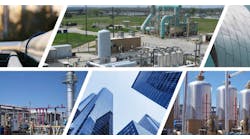May 11, 2011
Efforts have been underway for decades to conserve both energy and water, but never in concert. This is unfortunate because energy uses a lot of water and water uses a lot of energy.
Two leading conservation organizations have set out to bring the efforts together. The American Council for an Energy-Efficient Economy and the Alliance for Water Efficiency this week published a white paper that describes the co-dependence of water and energy resources, and outlines strategies to use both more efficiently.
The paper brings to light some interesting – and rarely discussed – ways each resource heightens use of the other.
- Sourcing, moving, treating, heating, collecting, re-treating, and disposing of water consumes19 percent of California’s electricity, 30 percent of its natural gas, and 88 billion gallons of diesel fuel annually, according to a 2005 California Energy Commission report.
- The River Network in 2009 found that energy use for water services accounts for 13 percent of US electricity consumption, at least 520 million megawatt-hours annually.
- Thermoelectric power accounted for an estimated 49 percent of US water withdrawals and 53 percent of fresh surface-water withdrawals in 2005.
ACEEE and AWE hope to work together on local, state and federal policy to bring more energy efficiency to water use and water efficiency to energy use. They have some hurdles to overcome. For example, “the water and energy efficiency communities do not share a common language or appreciation of existing efficiency efforts,” the white paper said. “In addition, the two communities frequently operate under different regulatory business models and existing structures that do not recognize the benefits of both energy and water savings.”
The organizations intend to develop approaches that encourage communication and guide the industries and their regulators. They hope to share best practices and integrate water efficiency into existing energy efficiency programs and vice versa.
The project looks not only at the big water and energy users like power plants and waste water treatment facilities, but also households. This could prove interesting, as we move increasingly toward whole house automation as a way to increase efficiency and comfort in the home. Home automation has tended, thus far, to focus on energy and telecommunications, with a host of up-and-coming high tech gadgets that make the home a more interesting and more resource-efficient place to live, work and play. If water and energy efficiency merge in the direction described by ACEEE and AWE, will we see a new suite of ‘smart water’ technologies in the smart home? Stay tuned. This could be interesting. Read the white paper here.
Elisa Wood’s white paper, “Exporting US Energy Efficiency,” is available at www.RealEnergyWriters.com.






